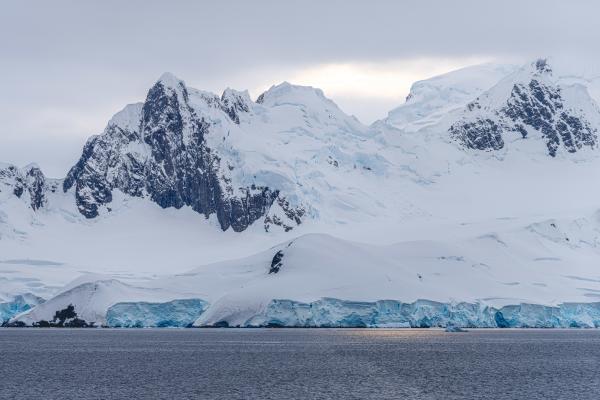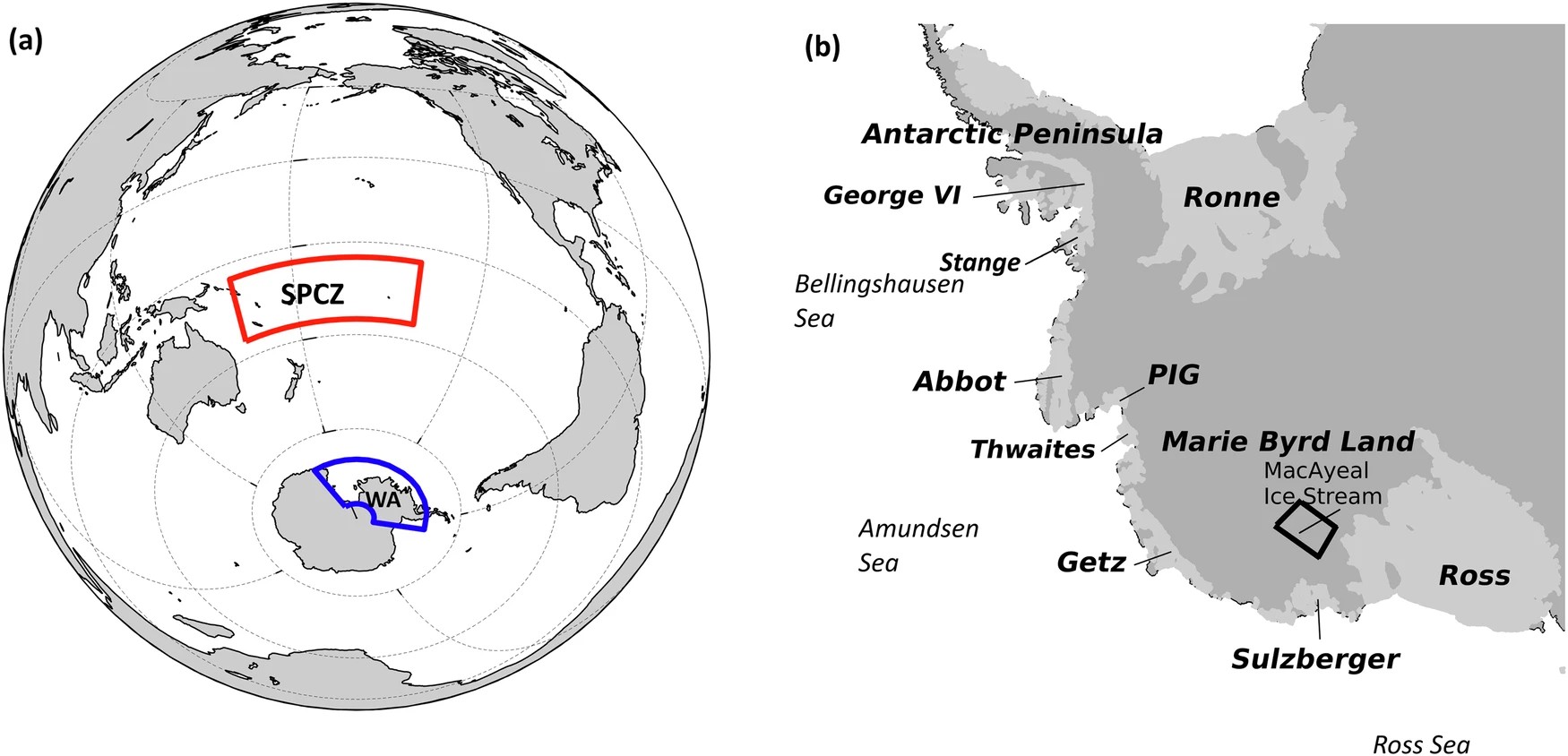Recent Rise in West Antarctic Ice Shelf Melting Linked to Interdecadal Pacific Oscillation

A recent study published in Communications Earth & Environment, led by Pranab Deb and co-authored by David Bromwich, Principal Investigator at the Byrd Center's Polar Meteorology Group, alongside international researchers Andrew Orr, Arnab Sen, and Kyle R. Clem, presents a comprehensive analysis of the recent increase in summer surface melting across major West Antarctic ice shelves. The research employs satellite measurements and outputs from the MetUM regional atmospheric model, a regional atmospheric model used for weather forecasting and climate simulations, to compare two distinct periods: 1979–1998 and 1999–2018. While the earlier period was characterized by decreasing melt trends driven by a positive Southern Annular Mode, the subsequent period revealed a marked reversal, with a significant increase in melt days across the Ross-Amundsen Sea sector.
The Interdecadal Pacific Oscillation (IPO) shift to its negative phase in the late 1990s is central to this transition. This phase shift is associated with enhanced sea surface temperatures and increased convective activity in the South Pacific Convergence Zone (SPCZ), which, in turn, induces a robust extratropical Rossby wave response. Rossby waves are large-scale waves in the atmosphere primarily driven by the Earth's rotation, resulting in alternating regions of high and low pressure that significantly influence weather patterns in these regions. The propagation of Rossby waves results in changes in atmospheric pressure and wind patterns that occur in the extratropics.

The study shows that this teleconnection intensifies high-pressure blocking over the Amundsen-Bellingshausen Sea region, directing warm marine air over the ice shelves. This interaction between tropical convection and midlatitude circulation is the leading cause of the increased surface melt for 1999-2018. On interannual timescales, other circulation patterns, such as the El Niño-Southern Oscillation and the Southern Annular Mode, can sometimes exert a stronger influence than the SPCZ teleconnection. Nevertheless, the SPCZ teleconnection remains a crucial factor driving long-term melt trends over West Antarctica.
The analysis further details how changes in atmospheric circulation patterns, especially changes in air pressure at mid-levels (500 hPa) and adjustments in the north-south wind patterns at lower levels (850 hPa), are key factors contributing to increased melting conditions.
The research employs observational data and linear response theory models to establish a clear correlation between SPCZ-induced convection and the increased frequency of blocking events in West Antarctica. This finding is significant, as the enhanced blocking events facilitate prolonged episodes of warm air transport, leading to surface temperatures that frequently exceed the melting threshold.
In addition to explaining the mechanistic aspects of the melt trend reversal, the study also discusses the broader implications of these findings for regional climate dynamics and sea level rise.
The study highlights that the interplay between the negative IPO phase and SPCZ teleconnections may have significant consequences for the stability of ice shelves and the future evolution of the West Antarctic Ice Sheet.
The work emphasizes the importance of accurately incorporating these remote tropical influences into climate models to improve predictions of cryospheric change and its associated impacts on global sea levels.
The study provides critical insights into the complex atmospheric processes driving the recent increase in surface melt over West Antarctic ice shelves. By highlighting the role of large-scale teleconnections, particularly those stemming from the SPCZ, this research contributes to a more nuanced understanding of Antarctic climate variability and its potential future trajectory.
Learn more about this study by visiting Communications Earth & Environment.
